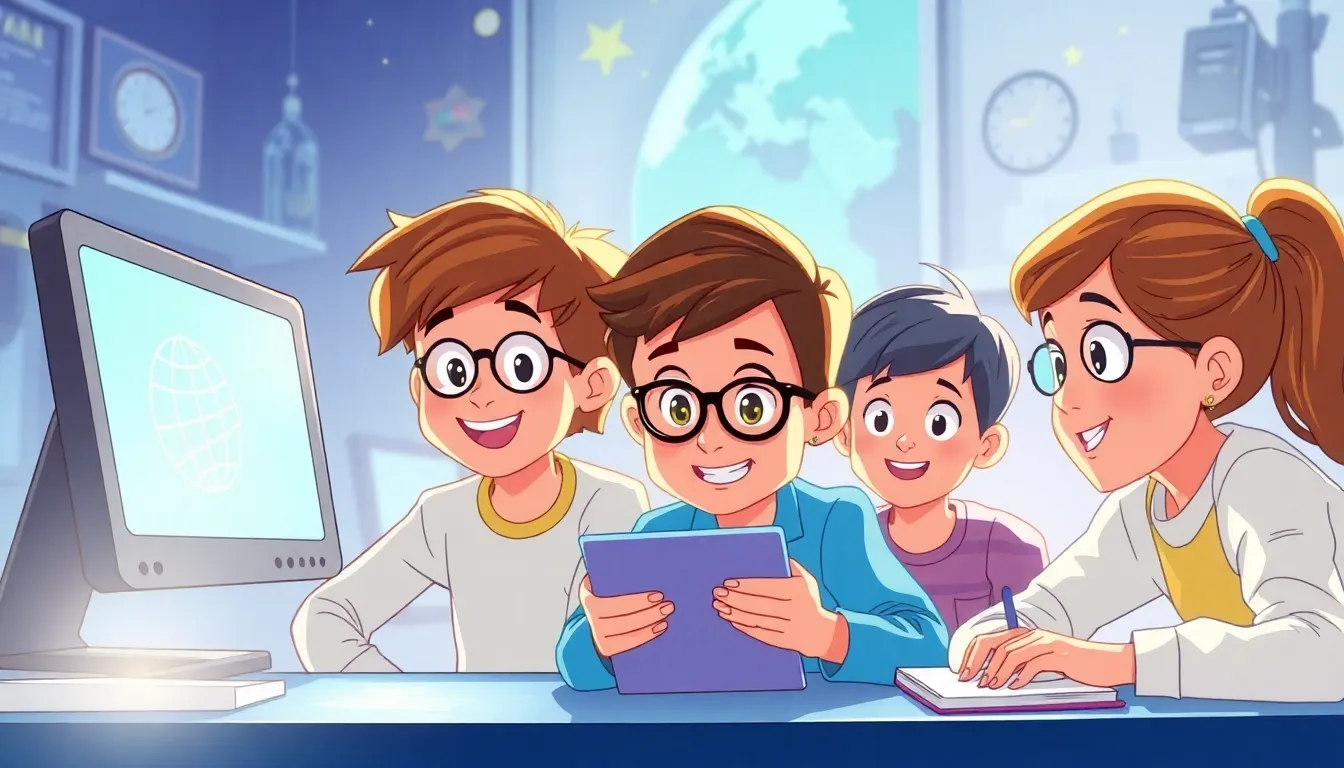
🌐 Website Basics: How The Internet’s Pages Come To Life
Introduction
Ever wondered how you can read a story, watch a video, or play a game on a computer or tablet? All of those things happen on Websites—digital places you can “visit” just like a park or a museum. In this guide we’ll explore the building blocks of a website, learn some new words, and even try a tiny experiment yourself!
1. What Is a Website?
A website is a collection of Web Pages that live on a computer called a Server.
- Server: A powerful computer that stores all the files (pictures, text, videos) and sends them to you when you ask for them.
- Web Page: One screen of information, like a single page in a book.
Cause And Effect: When you click a link, your computer sends a request to the server. The server then Responds by sending the requested page back to you, and the page appears on your screen.
Example
Think of a server as a library and each web page as a book. When you ask the librarian (your browser) for a specific book, the librarian runs to the shelf (the server), grabs the book, and hands it to you.
2. How Do You See a Website?
The Browser is the tool that lets you explore the web. Popular browsers include Chrome, Firefox, Safari, and Edge.
- Browser (noun): A program that reads the code of a web page and turns it into pictures, words, and videos you can understand.
When you type a web address (called a URL) into the browser, the browser asks the server for that page. The server sends the page’s code, and the browser translates it into what you see.
Cause and Effect
- If the server is down (not working), Then the browser shows an error message instead of the website.
- If your internet connection is slow, Then the page loads more slowly.
3. the Building Blocks: Html, Css, and Javascript
Websites are built with three main languages:
| Language | What It Does | Simple Definition |
|---|---|---|
| HTML (HyperText Markup Language) | Gives the page structure – headings, paragraphs, pictures | The skeleton of a webpage |
| CSS (Cascading Style Sheets) | Adds style – colors, fonts, layout | The clothes and paint |
| Javascript | Makes the page interactive – buttons that react, games, animations | The brain that makes things move |
Did You Know? The first website ever created in 1991 was just a simple page of text written in HTML. It looked like a plain document, but it started the whole world of the web!
4. Mini Experiment: Make Your Own “web Page” on Paper
You don’t need a computer to understand how a website works. Follow these steps:
-
Draw A Rectangle on a sheet of paper – this is your “browser window.”
-
Inside, sketch a Header at the top (like a title). Write “My Awesome Site.”
-
Add a Menu Bar with three items:
-
Add a Menu Bar with three items:
- Home
- Gallery
- Contact
-
Draw a big rectangle below the header for the main content area. Inside, write a short paragraph like “Welcome to my site!” and draw a simple picture or doodle.
-
Create a button at the bottom of the page. Label it “Click Me!” and imagine what would happen if you could press it (maybe a fun sound or a surprise picture appears).
Quiz: Test Your Web Knowledge
1. What does HTML give a web page?
a) Colors and fonts
b) The page’s structure ✓
c) Moving animations
d) Music
2. Which tool turns code into the pictures you see on a screen?
a) Server
b) Keyboard
c) Browser ✓
d) Printer
3. If the server is not working, what will the browser show?
a) A new website
b) An error message ✓
c) A video
d) A game
Great job! You now know the basics of how websites are built and work.